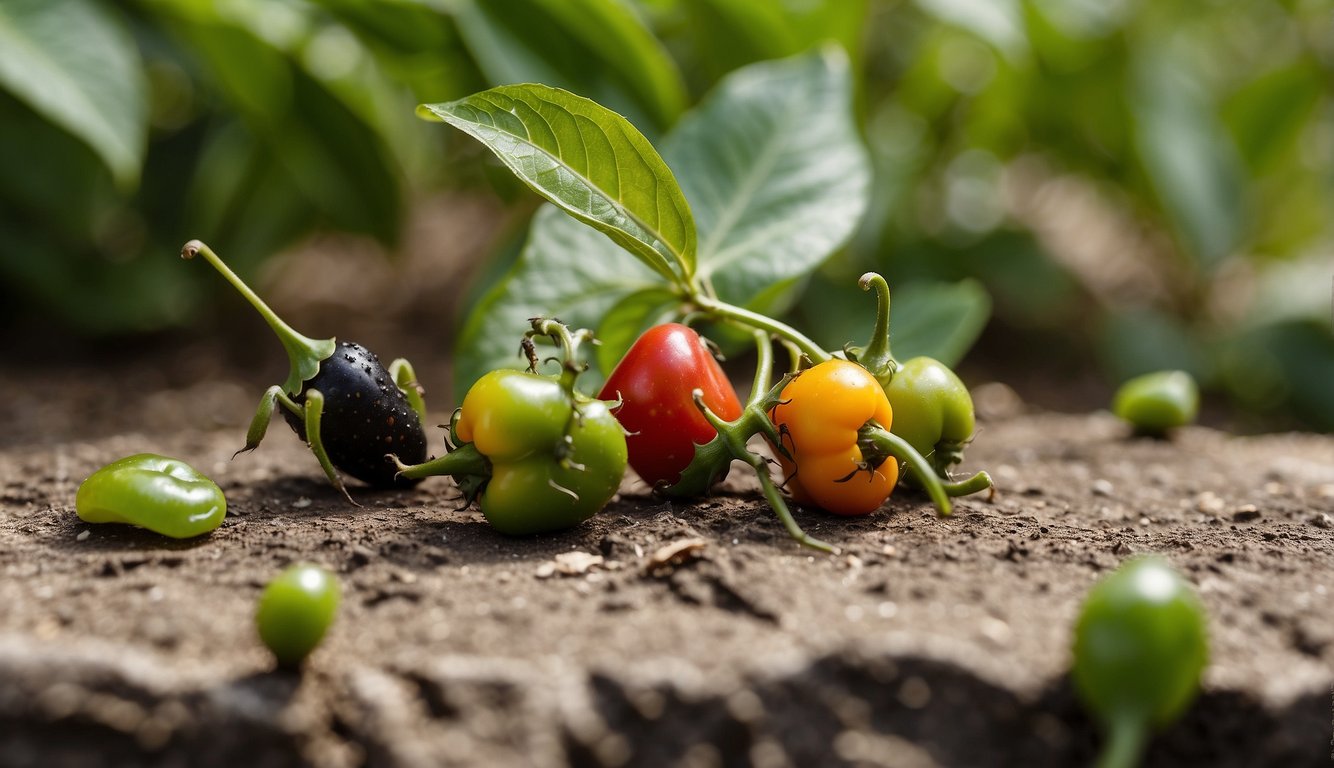TheHerbProf.com is a treasure trove of knowledge for those interested in natural healing and herbal remedies. The website is run by Paul Johnston MD. A naturopathic who has not only received extensive education in the field but also has personal experience in self-healing.
Pepper plants are a popular choice for gardeners because they are easy to grow and produce a bountiful harvest. However, like any plant, they are susceptible to pests that can damage or destroy the crop. One of the most common pests on pepper plants is the aphid. These tiny insects suck the sap from the leaves and stems, causing the plant to wilt and die.
Another common pest is the spider mite, which can cause yellowing of the leaves and stunted growth.
Other pests that can be found on pepper plants include flea beetles, thrips, and whiteflies. Identifying these pests early on is crucial to preventing damage to the crop.
In this article, I will share my knowledge and experience on how to identify and control pests on pepper plants. I will provide tips on how to prevent infestations, as well as natural and chemical methods for controlling pests.
By following these tips, you can ensure a healthy and bountiful harvest of peppers.
Identifying Common Pepper Plant Pests
As a gardener, it is essential to be able to identify common pepper plant pests to prevent damage to your plants. Here are some of the most common pests that can be found on pepper plants:
Aphids and Ants
Aphids are small, soft-bodied insects that can be found on the underside of pepper plant leaves. They can be green, black, or brown in color and can cause stunted growth and distorted leaves.
Ants are often found near aphid colonies, as they are attracted to the honeydew that aphids produce.
To get rid of aphids, you can use a strong stream of water to wash them off the plant, or use an insecticidal soap.
Caterpillars and Cutworms
Cutworms and caterpillars are common pests that can cause significant damage to pepper plants.
Cutworms are larvae of moths and can be found in the soil around the base of the plant. They can cut through the stem of the plant, causing it to wilt and die.
On the other hand, caterpillars are the larvae of butterflies and moths and can be found on the leaves of the plant. They can eat through the leaves, causing significant damage.
To prevent cutworms, you can place a collar made of cardboard or plastic around the base of the plant. To get rid of caterpillars, you can use an insecticide.
Flea Beetles and Spider Mites
Flea beetles are small, shiny insects that can jump when disturbed. They can cause small holes in the leaves of pepper plants, causing them to wilt and die.
Spider mites are tiny arachnids that can be found on the underside of the leaves of pepper plants. They can cause yellowing of the leaves and a stippled appearance.
To prevent flea beetles, you can use row covers or insecticidal soap. To get rid of spider mites, you can use a strong stream of water to wash them off the plant or use an insecticidal soap.
Whiteflies and Thrips
Whiteflies are small, white insects that can be found on the underside of pepper plant leaves. They can cause yellowing of the leaves and a sticky residue on the plant.
Thrips are tiny insects that can cause significant damage to pepper plants. They can cause distorted leaves and flowers, as well as discoloration.
To prevent whiteflies, you can use row covers or insecticidal soap. To get rid of thrips, you can use an insecticide.
Armyworms and Hornworms
Hornworms and armyworms are common pests that can cause significant damage to pepper plants.
Hornworms are large, green caterpillars that can be found on the leaves of pepper plants. They can eat through the leaves, causing significant damage.
On the other hand, armyworms are the larvae of moths and can be found on the leaves of the plant. They can eat through the leaves, causing significant damage.
To prevent hornworms and armyworms, you can use an insecticide.
Corn Borers and Pepper Weevil
Pepper weevils and corn borers are common pests that can cause significant damage to pepper plants.
Pepper weevils are small, black insects that can be found on the leaves of pepper plants. They can cause significant damage to the fruit of the plant.
On the other hand, corn borers are the larvae of moths and can be found on the leaves of the plant. They can eat through the leaves, causing significant damage.
To prevent pepper weevils and corn borers, you can use an insecticide.
Pepper Plant Diseases Related to Pests
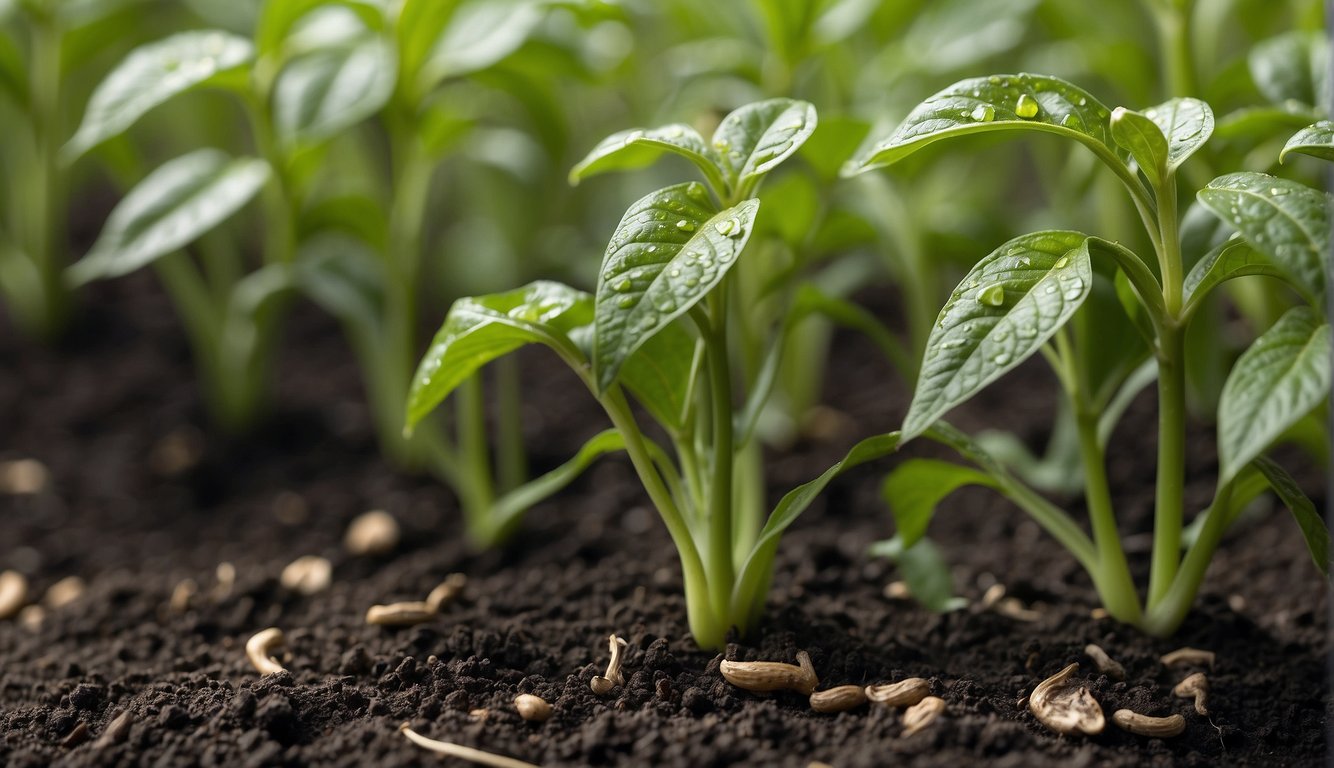
As a pepper plant owner, it is essential to be aware of the different diseases that pests can bring to your plants. The following are some of the most common pepper plant diseases related to pests:
Leaf Spot and Mosaic Virus
Mosaic virus and leaf spot are two of the most common diseases that can affect pepper plants.
Mosaic virus is caused by a virus that is transmitted by aphids and other insects. It causes yellowing and stunted growth of the plant, and there is no cure for it.
On the other hand, leaf spot is caused by a fungus that thrives in humid conditions. It causes brown spots on the leaves and can lead to defoliation of the plant.
Powdery Mildew and Blight
Blight and powdery mildew are two other diseases that can affect pepper plants.
Blight is caused by a fungus that thrives in warm and humid conditions. It causes the leaves to wither and turn brown, and can lead to the death of the plant.
Powdery mildew, on the other hand, is caused by a fungus that thrives in dry conditions. It causes a white powdery coating on the leaves and can also lead to defoliation of the plant.
Anthracnose and Phytophthora Blight
Phytophthora blight and anthracnose are two diseases that can also affect pepper plants.
Phytophthora blight is caused by a fungus that thrives in wet conditions. It causes the stem and fruit to rot, and can lead to the death of the plant.
On the other hand, anthracnose is caused by a fungus that thrives in warm and humid conditions. It causes circular spots on the leaves and can lead to defoliation of the plant.
Preventive Measures and Cultural Practices – Pests on Pepper Plants
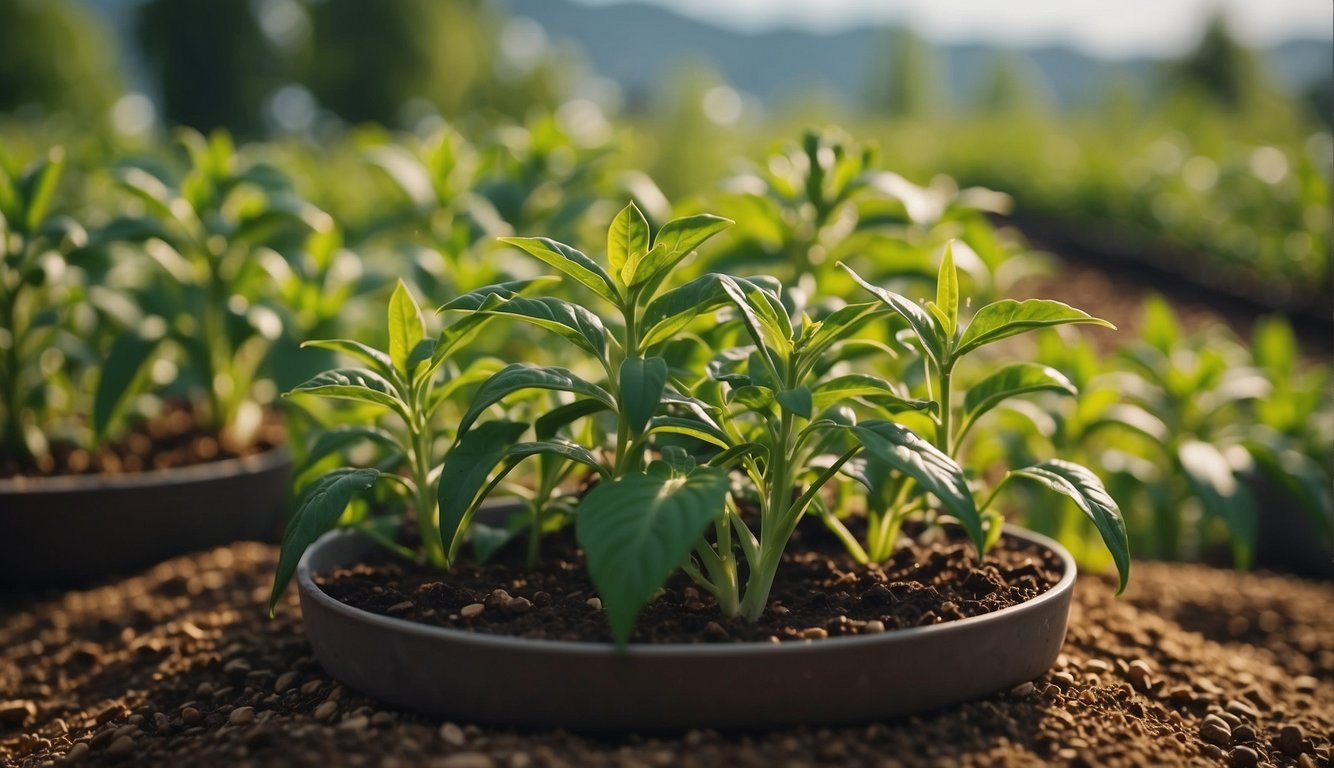
As a gardener, I have learned that prevention is key to managing pests on my pepper plants. There are several cultural practices that I follow to prevent pest infestations and promote plant health.
Soil Health and Mulching
I believe that healthy soil is the foundation of a healthy garden.
I always start by testing my soil to determine its pH and nutrient levels. Then, I make sure to amend my soil with organic matter, such as compost, to improve its structure and fertility.
I also add mulch to my garden beds to help retain moisture, suppress weeds, and regulate soil temperature.
Watering and Fertilization
Proper watering and fertilization are essential for healthy plant growth.
I make sure to water my pepper plants deeply and regularly, but not excessively.
Also, I fertilize my plants with a balanced organic fertilizer that contains nitrogen, phosphorus, and potassium.
I avoid over-fertilizing my plants, as this can lead to excessive vegetative growth and attract pests.
Garden Cleanliness and Crop Rotation
I keep my garden clean and free of debris to prevent pest infestations.
I remove any fallen leaves or fruit from my pepper plants and dispose of them in the trash.
Also, I practice crop rotation, which involves planting different crops in different areas of the garden each year.
This helps to prevent soil-borne diseases and pests from building up in the soil.
Companion Planting and Beneficial Insects
I have found that companion planting and beneficial insects can be effective in managing pests on my pepper plants.
I plant herbs, such as basil and oregano, near my pepper plants to repel pests and attract beneficial insects. Such as ladybugs and lacewings.
I also release beneficial insects, such as predatory mites and parasitic wasps, into my garden to control pest populations.
Biological and Chemical Control Strategies – Pests on Pepper Plants
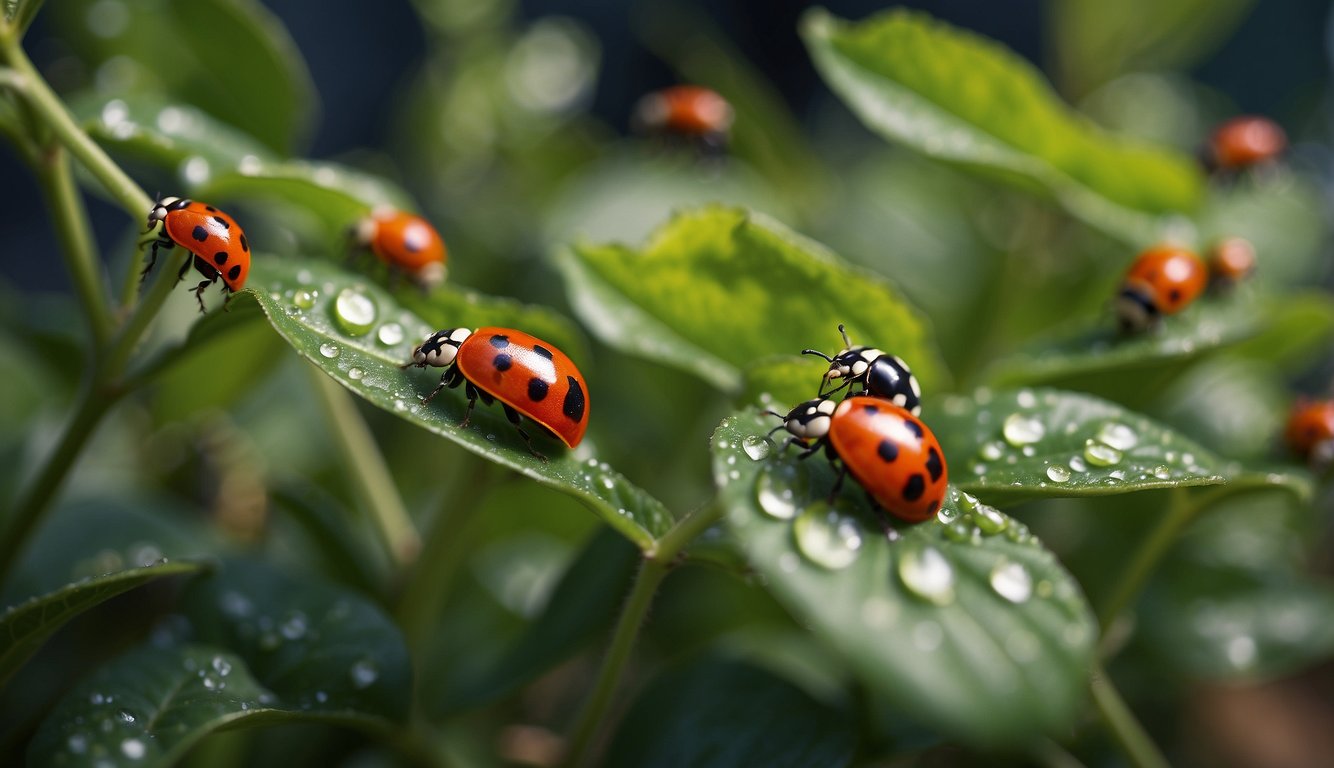
As a pepper plant grower, it is important to have a pest management plan in place in order to minimize the damage caused by pests. There are several biological and chemical control strategies that can be employed to manage pests effectively.
Using Insecticides and Fungicides
Insecticides and fungicides are chemical control methods that can be used to manage pests on pepper plants.
Bacillus thuringiensis is a commonly used insecticide that is effective against caterpillars, while pyrethrin is effective against aphids, spider mites, and whiteflies.
Fungicides such as copper-based products can be used to control fungal diseases like powdery mildew and anthracnose.
Natural Predators and Parasitoids
Natural predators and parasitoids are biological control methods that can be used to manage pests on pepper plants.
Beneficial nematodes are effective against soil-borne pests like root-knot nematodes. Parasitic wasps are effective against caterpillars and aphids. Ladybugs and lacewings are effective against aphids, spider mites, and whiteflies.
Organic Pesticides and Neem Oil
Organic pesticides and neem oil are chemical control methods that can be used to manage pests on pepper plants.
Insecticidal soap is effective against soft-bodied insects like aphids, while neem oil is effective against a wide range of pests including aphids, spider mites, and whiteflies.
Organic pesticides like spinosad and pyrethrin are effective against a wide range of pests and can be used in organic farming.
Monitoring and Immediate Actions – Pests on Pepper Plants
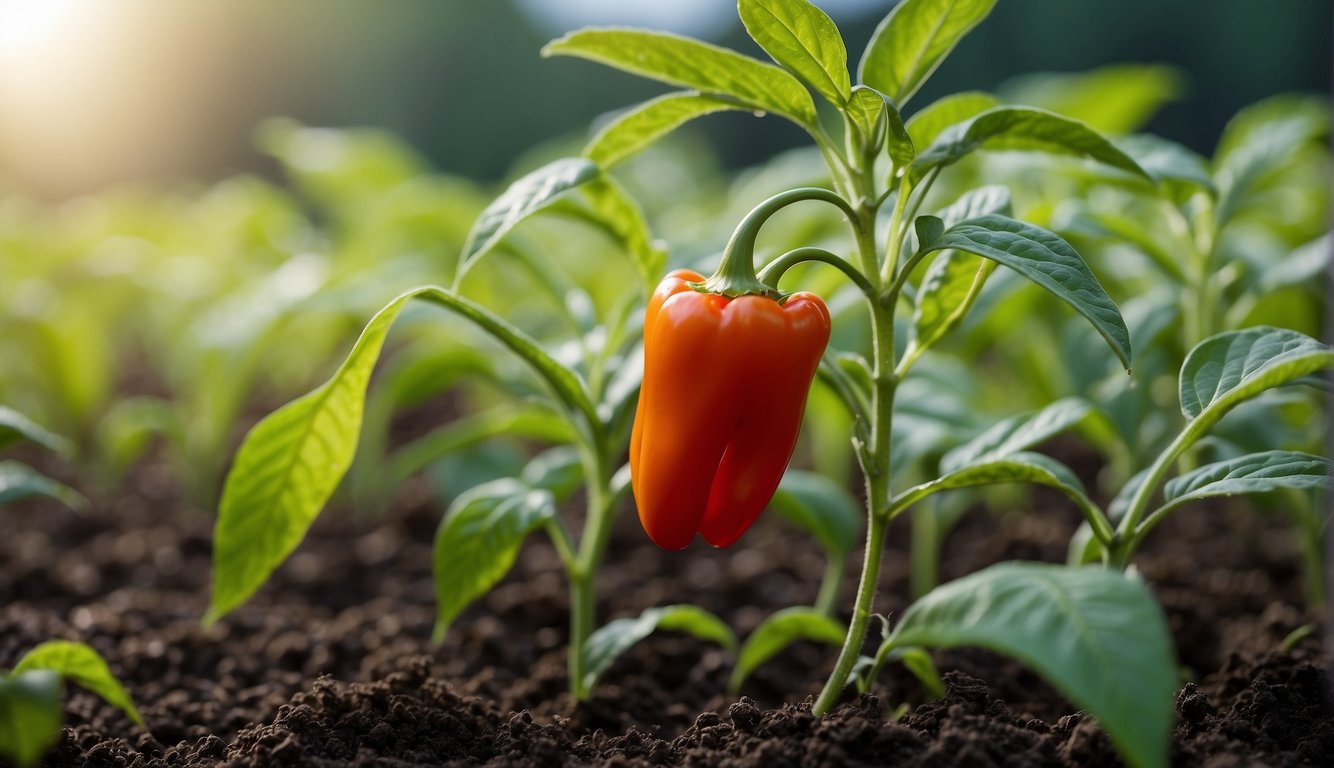
As a responsible pepper plant owner, it is crucial to monitor the plants regularly to identify any early signs of infestation. Early detection is key to preventing the spread of pests and diseases and maintaining the plants’ health. Here are some tips for identifying early signs of infestation:
Identifying Early Signs of Infestation
- Check the leaves for holes, yellowing, curling, and dark spots.
- These are signs of pest damage or disease.
- Look for larvae or eggs on the leaves, buds, and flowers.
- These can be a sign of an infestation that is just starting.
- Check the undersides of leaves for pests such as spider mites, whiteflies, and aphids.
- These pests can cause significant damage to the plant by feeding on the sap and producing honeydew, which attracts other pests.
- Keep an eye out for leaf drop, which can be a sign of severe infestation or disease.
Physical Removal and Barriers
If pests are detected, physical removal and barriers can be an effective way to control the infestation. Here are some tips:
- Use floating row covers to prevent pests from reaching the plants.
- These covers allow light and water to pass through while keeping pests out.
- Remove any affected leaves or plants immediately to prevent the spread of the infestation.
- Use sticky traps to catch flying pests such as whiteflies and aphids.
- Place barriers such as copper tape or diatomaceous earth around the plants to prevent crawling pests such as slugs and snails from reaching them.
Applying Immediate Treatments
If pests are detected, applying immediate treatments can help control the infestation. Here are some tips:
- Apply insecticidal soap or neem oil to the affected areas.
- These treatments can help control pests such as spider mites, aphids, and whiteflies.
- Apply a fungicide to control diseases such as rot and leaf spot.
- Use an organic pesticide such as pyrethrin to control pests such as caterpillars and corn borers.
Harmonizing Pests on Pepper Plants with TheHerbProf
Let’s explore how our Pests on Pepper Plants guide and the herbal wisdom at theherbprof.com can work together.
Our Pests on Pepper Plants guide is your first step to a pest-free pepper garden. But what about the rest of the journey? That’s where theherbprof.com comes in. It’s your herbal encyclopedia, including pepper plant care!
Picture this. You’ve followed our Pests on Pepper Plants guide and your peppers are pest-free. But you’re unsure about watering or when to harvest. No problem! Theherbprof.com has all the answers. It offers a wealth of information on how to care for your pepper plants.
And there’s more! Theherbprof.com also shares the health benefits of peppers. So, while you’re enjoying the fruits of your labor, you’re also learning about their nutritional value.
So, let’s get growing with our Pests on Pepper Plants guide and let theherbprof.com guide us on this pepper-growing journey.
References – Pests on Pepper Plants
Little Herb Encyclopedia, by Jack Ritchason; N.D., Woodland Publishing Incorporated, 1995
The Ultimate Healing System, Course Manual, Copyright 1985, Don Lepore
Planetary Herbology, Michael Tierra, C.A., N.D., Lotus Press, 1988
Handbook of Medicinal Herbs, by James A. Duke, Pub. CRP Second Edition 2007
The Complete Medicinal Herbal, by Penelope Ody, Published by Dorling Kindersley
Check the Following Articles!
How to Fertilize Tomato Plants? A Comprehensive Guide
No Lemons on My Lemon Tree: Solving The Problem
Insects on Pepper Plants: Identification and Control
How Long Does It Take to Grow Avocado?
Frequently Asked Questions – Pests on Pepper Plants
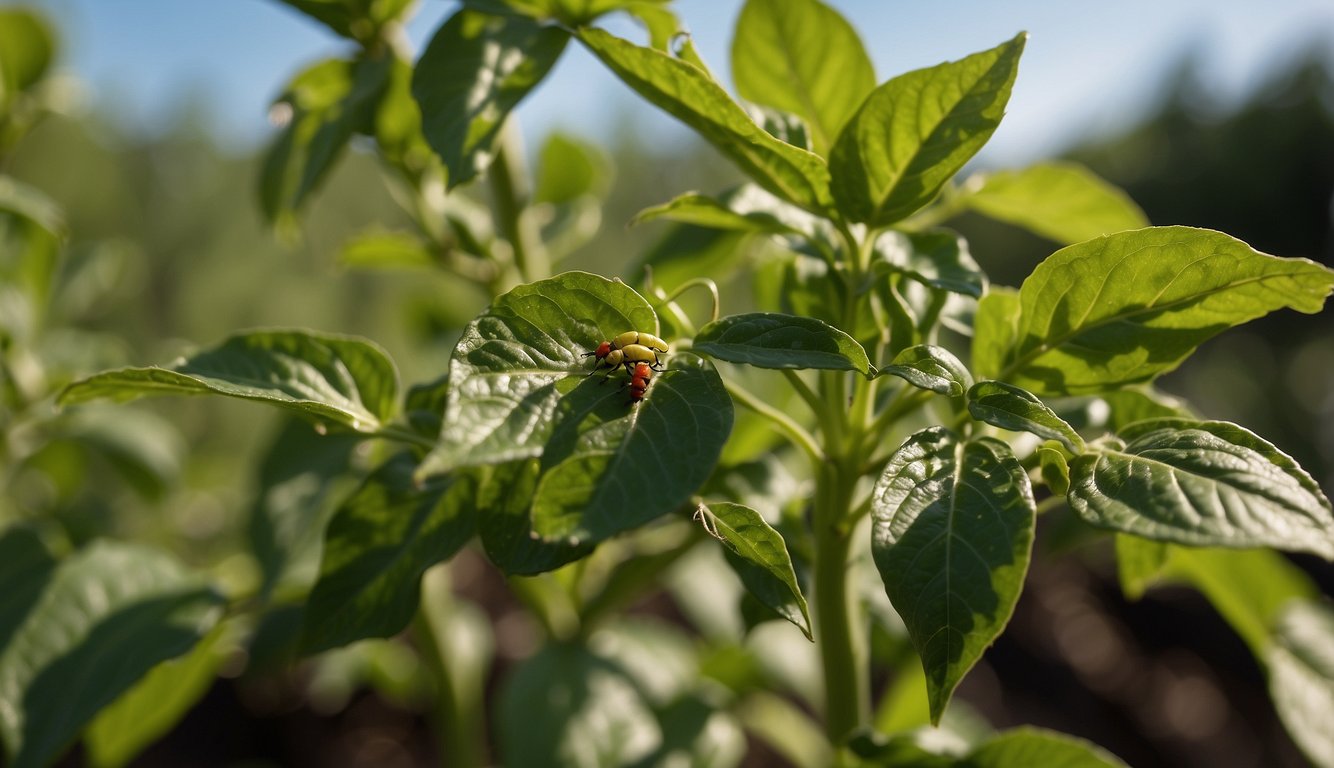
What are the common signs of pest infestation on pepper plants?
The common signs of pest infestation on pepper plants include yellowing leaves, stunted growth, distorted leaves, and the presence of insects on the plants. Look closely at the leaves and stems of your pepper plants for any signs of discoloration, spots, or holes. You may also notice that the leaves are curling or wilting, which can be a sign of insect damage.
How can I naturally deter bugs from my pepper plants?
There are several natural ways to deter bugs from your pepper plants.
- One effective method is to plant companion plants that repel insects, such as marigolds or basil.
- You can also make a homemade insecticide using ingredients like garlic, onion, and hot peppers.
- Another option is to use sticky traps or insecticidal soap to catch and kill insects.
What treatments are effective for aphid control on pepper plants?
Aphids are a common pest that can be controlled using several treatments.
- One effective method is to spray the plants with a mixture of water and dish soap, which will suffocate the aphids.
- You can also introduce natural predators like ladybugs or lacewings to your garden.
- Additionally, neem oil or insecticidal soap can be used to control aphids.
How do I identify and treat spider mite damage on pepper plants?
Spider mites are tiny arachnids that can cause damage to pepper plants.
- The common signs of spider mite damage include yellowing leaves, stippled leaves, and webbing on the plants.
- To treat spider mite damage, you can spray the plants with a mixture of water and dish soap.
- Additionally, you can introduce natural predators like predatory mites or ladybugs to your garden.
What methods can I use to remove whiteflies from my pepper plants?
Whiteflies are small insects that can be removed from pepper plants using several methods.
- One effective method is to use sticky traps, which will catch the whiteflies.
- You can also introduce natural predators like parasitic wasps or ladybugs to your garden.
- Additionally, you can spray the plants with insecticidal soap or neem oil to control whiteflies.
How can I prevent insects from laying eggs on my pepper plants?
To prevent insects from laying eggs on your pepper plants, you should keep the garden area clean and free of debris.
Remove any fallen leaves or fruit from the ground, as these can attract insects.
You can also use row covers or netting to protect your plants from insects.
Additionally, you can introduce natural predators to your garden to help control the insect population.
